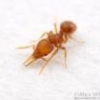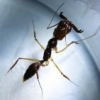I've read that it's very difficult to breed ants in captivity because they're missing the natural cues that colonies need from their environment in order to create and release alates. So my question is this: has anyone ever TRIED to breed ants in a controlled, semi-outdoor environment? My thinking is that success may be obtainable if the setup were in a carport or other similarly exposed outdoor structure. Has anyone else tried this or have any insight?
One of the reasons why I'm interested in breeding ants is because we could develop a strain of domesticated ants that are easier to care for and tolerate our synthetic conditions better. Perhaps we could even create a breed that are willing to cohabitate nicely with other species. The possibilities are pretty wild, actually.
Thanks in advance for all who read this post, and most especially, to those who are willing to share their insight.



















